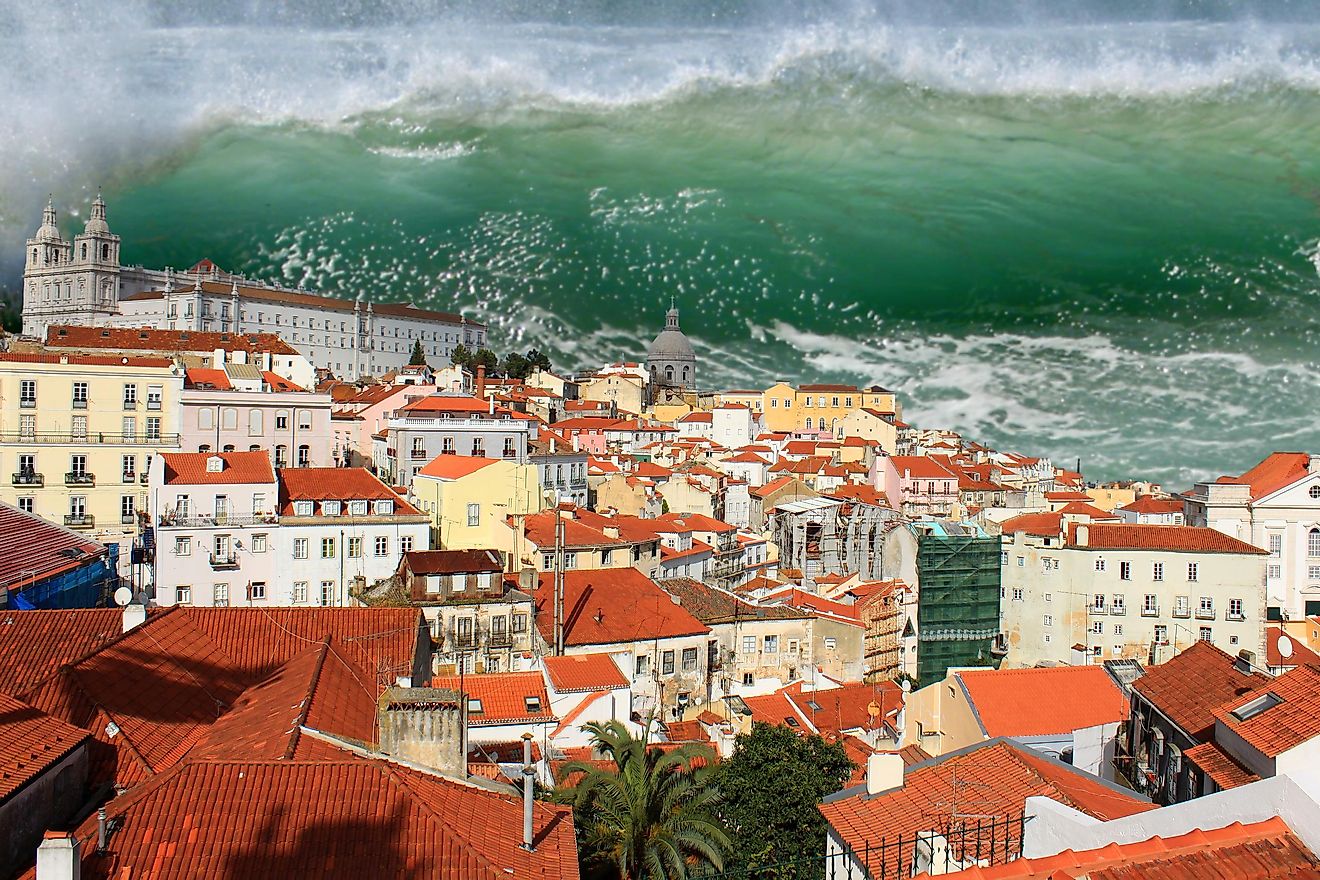What Are The Differences Between Tidal Waves And Tsunamis?

Tsunamis and tidal waves refer to sea waves which are significantly different, although many people confuse the two. A tidal wave is a shallow wave which is caused by the interactions between the gravitational forces of the earth, the moon, and the sun. In the past, the name tidal wave was used to describe what is now known as a tsunami. On the other hand, a tsunami refers to an ocean wave that is generated by a powerful earthquake originating from under the ocean. Other phenomena that can set off tsunami include submarine landslides, volcanic eruptions, glacial carving, and onshore landslides with an excessively large volume of debris falling into the water.
Tidal Waves
Tidal waves are experienced periodically and they depend on relative positions of the moon and the earth. This is the main reason why tides occur at different times each day. The gravitational force of the moon determines the height of the tidal wave, and that is why during the full and new moon, the tidal wave is highest. Similarly, during the quarter phases of the moon, the tidal wave is lowest. Coastal regions experience two low tides and two high tides each day. Due to the distance of the sun, its effect is minimal compared to the effects of the moon, which is significantly greater. As a result, tidal waves are largely predictable because they are affected by the atmosphere and they are more pronounced mainly along the river estuaries and in narrow bays. As a result of tidal waves, water levels could rise several feet high within hours. Tidal waves also could quickly fizzle out before reaching the coast.
Tsunamis
In the past, the tsunamis were incorrectly referred to as tidal waves, but they are not related. The only similarity is that the two phenomena take place in a large body of water like the oceans. Some early geographical texts referred to the phenomenon as seismic waves. Tsunamis have high wavelengths and low amplitudes. The wavelength can stretch to a few hundred miles long. Tsunamis may go unnoticed while in the seas, but they become more pronounced when they approach shallow waters or on land. Tsunamis are triggered when one of the causes such as the movement of tectonic plates generates moderate amplitudes or displace large amounts of water. Other events that can generate tsunamis include asteroids crashing into the ocean. When a tsunami is triggered under the sea, it causes a rapid and massive displacement of seawater. The water lying above the disturbed point can uplift water on the surface and build up speeds that can reach about 500 miles per hour. Due to different causes that can trigger a tsunami, this means that a tsunami can develop anywhere as opposed to tidal waves.
Intensity and Damage
The intensity of a tidal wave can be noticeable in certain regions where it is high enough, for instance, the Bay of Fundy located in Canada has tidal waves that can reach as high as 55 feet. Strong tidal waves can cause damage to structures along the beach and could even lead to flooding. Tsunamis, on the other hand, are much more powerful and very destructive. They can have wavelengths stretching as long as 120 miles and can travel at high speeds. The speed of tsunamis can drastically reduce as they approach landmasses or shallow water, but their amplitude increases significantly. Some of the scales used to measure tsunamis included Imamura-Lida scale used in the Pacific Ocean and Sieberg-Ambraseys scale used in the Mediterranean Sea. Murty and Lumis (ML) is also a common measure of the magnitude of a tsunami. Tsunamis are always associated with widespread damage, and with their destructive power, they are capable of destroying entire villages and drowning virtually anything standing on its way.
Frequency and location
Tidal waves are common along the coastal areas in different parts around the world. Tsunamis are frequent in the Pacific Ocean, and it is estimated that 80% of all the tsunamis develop in the Pacific Ocean. They can also happen anywhere else as long as the causing agents are available. Tidal waves can be experienced on a daily basis, particularly in the coastal areas. Although tsunamis may not be accurately predicted, there are some signs that could be used to warn people and finally save lives.
Some of the Worst Tsunamis in History
One of the worst tsunamis in recent history is the one that hit Sumatra in Indonesia in 2004. The tsunami was caused by a 9.1 magnitude earthquake believed to have taken place 19 miles below the seafloor. The fault zone which caused the tsunami was about 800 miles long, and it displaced the floor of the sea by several feet along its length. The resulting tsunami was 160 feet tall, and it reached three miles inland near Sumatra. The damages caused by the tsunami were estimated at $10 billion, and about 230,000 people lost their lives.
Tsunamograph
The National Oceanic and Atmospheric Administration (NOAA) recently developed a tsunamograph, which is a device that can give real-time data about tsunamis, and they are more accurate compared to other methods used predicting tsunami. The apparatus has a seafloor recorder and a buoy. The recorder is placed at a depth of about 16,400 feet to measure changes in pressure as a result of changes in water level. The buoy receives acoustic signals transmitted by the recorder, which are relayed to the satellites indicating the heights of the waves. The information is used to forecast the progression of the tsunami. Currently, there are only 50 tsunamographs around the world.











